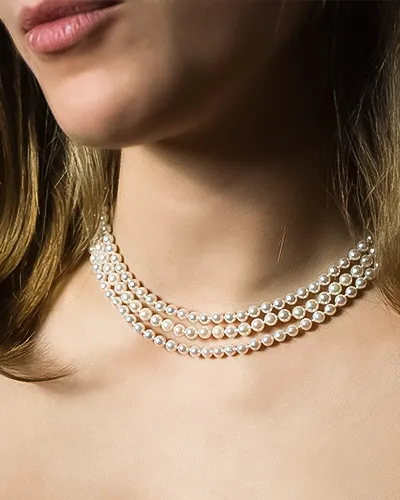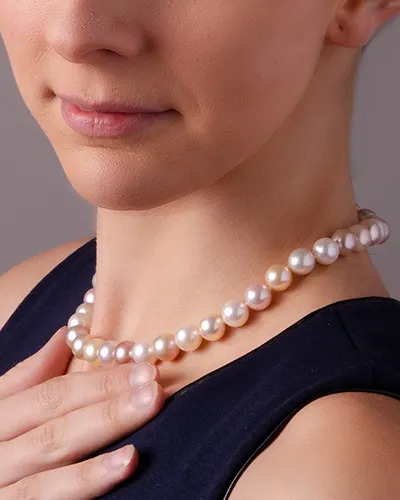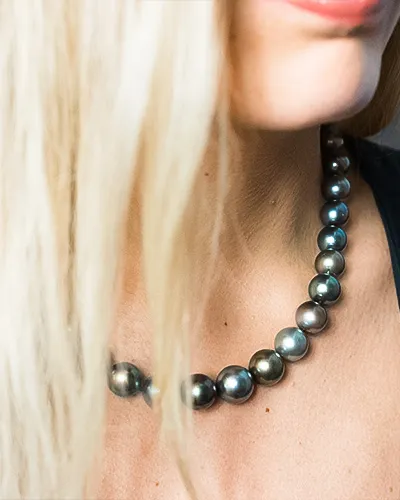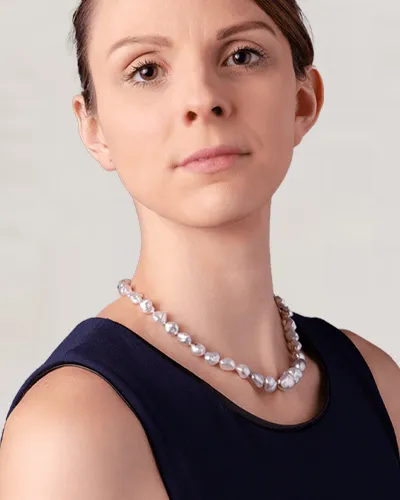Your Complete Guide
Pearl Guide
A pearl is a natural creation of a shellfish living in a lake or the sea that filters water to obtain the nutrients it needs to live. The shellfish's body can occasionally be irritated by bacteria, bubbles, or other small objects. To protect itself from the elements, a nacre sac is created to enclose these small particles. Gradually, more layers of nacre are deposited to isolate the irritant until, eventually, a lustrous pearl develops.
How do Pearls grow
Natures Gem
Pearls are naturally produced by the defensive response of a bivalve or gastropod. When invaded by an unwanted intruder, such as rough particules or a small organism, the creature forms an encasing vesicle around the offending particle, we call this the "Pearl Sac". The pearl sac is then filled with a substance from its internal mantle called nacre, more commonly known as mother of pearl. This builds up in concentric layers within the pearl sac, hardening with each deposit and encasing the particle. Many repetitions of this process is what eventually forms a natural pearl.
Natures Gem
A pearl is a natural creation of a shellfish living in a lake or the sea that filters water to obtain the nutrients it needs to live. The shellfish's body can occasionally be irritated by bacteria, bubbles, or other small objects. To protect itself from the elements, a nacre sac is created to enclose these small particles. Gradually, more layers of nacre are deposited to isolate the irritant until, eventually, a lustrous pearl develops.
Despite this, it is extremely rare for natural pearls to occur in this way, and also extremely rare for a natural pearl to meet the strict criteria now established in the industry regarding shape. Since ancient times, humans have tried to unlock the secrets of nature in order to initiate the pearl making process.
Natural, Cultured & Simulated Pearls
Natural and Cultured pearls are both "real" pearls, being made of the same material, grown by the same molluscs and extracted in the same way. The difference is that with cultured pearls, the initial process which causes the pearl generation has been initiated by a pearl farmer, rather than having occurred by chance in the wild. Simulated pearls, which we do not supply, are simply imitations which have been manufactured using an artificial process.
Harnessing Nature
The modern pearl culturing process we still essentially use today, was developed theoretically by British biologist and sustainable fishing advocate William Saville-Kent, between 1892 and 1895, whilst studying the Great Barrier reef on behalf of the Australian government. His involvement has only fairly recently come to light and for many years, it was believed the Japanese – notably Mikimoto, Nishikowa and Mise were responsible for perfecting the technique.
The Beginning
A small irritant or nucleus is carefully placed inside an oyster or mussel.
Natural Defense
The mollusk secretes nacre (mother-of-pearl) to coat the irritant, layer by layer.
Years of Growth
Over 2-7 years, thousands of nacre layers create the pearl's luster and beauty.
The Harvest
Expert farmers carefully harvest and sort pearls by quality, size, and color.
Types of Pearls
Each pearl type has its own unique characteristics, origins, and beauty. Discover which pearl speaks to you.
Understanding Pearl Quality
Learn what makes a pearl exceptional. These five factors determine a pearl's beauty and value.
Luster
The intensity and sharpness of light reflected from a pearl's surface
Quality Grades
Expert Tip
Look for pearls with sharp, bright reflections
Caring for Your Pearls
Keep your pearls beautiful for generations
Last On, First Off
Put pearls on after applying cosmetics and perfume. Remove them first when undressing.
Gentle Cleaning
Wipe pearls with a soft, damp cloth after wearing. Never use ultrasonic cleaners.
Proper Storage
Store pearls separately in a soft pouch or lined box to prevent scratching.
Wear Them Often
Pearls benefit from your body's natural oils. Regular wear keeps them lustrous.
Professional Care
Have pearl necklaces restrung every 1-2 years if worn frequently.
Ready to Find Your Perfect Pearl?
Now that you're a pearl expert, discover our stunning collection of pearl jewelry.




